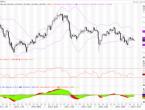EUR/USD
1.17061
-0.026%
Gold
4353.47
0.322%
Oil
56.787
0.485%
USD/JPY
157.684
-0.001%
GBP/USD
1.33758
0.018%
GBP/JPY
210.918
0.017%
December 22nd - Recently, in the Israeli-controlled areas east of the "Yellow Line," the withdrawal line established in the first phase of the Gaza ceasefire agreement, several Palestinian armed factions are attempting to expand their influence and gain dominance, vying to fill the vacuum left by the departure of Hamas. It is reported that at least five armed factions are currently active in the Israeli-controlled areas, openly stating their intention to play a role in the Gaza Strip after Hamass downfall. Fearing a threat to their position in Gaza, Hamas is cracking down on these factions, while the people of Gaza fear that the region may slide into civil war.On December 22nd, local time, the Russian Ministry of Defense released a war report stating that over the past day, Russian forces had secured more advantageous defensive lines and positions in all directions, advancing deeper into Ukrainian defenses. Russian forces targeted Ukrainian defense industry enterprises, energy, transportation, and warehousing infrastructure supporting Ukrainian troops, long-range drone assembly sites, and temporary outposts of Ukrainian troops and foreign mercenaries. On the 21st, the Ukrainian Armed Forces stated that, affected by the rapid advance of Russian forces, Ukrainian troops had withdrawn from several positions near the Russian-Ukrainian border in Krasnopyria, Sumy Oblast. Currently, Ukrainian forces are continuing operations along the border, eliminating Russian manpower, and Russian forces are currently under Ukrainian fire.Conflict Status: 1. Ukraine claims infrastructure in Odessa region was attacked. 2. Russia has deployed its 5,500-kilometer Hazel missile to Belarus. Other Developments: 1. French Presidential Palace: The method of dialogue between the French and Russian presidents will be determined within days. 2. US intelligence indicates that Putins war objectives in Ukraine remain unchanged. 3. The Ukrainian delegation held a series of meetings with the US and EU; the US envoy described them as "productive." 4. Kremlin: Putin is ready to engage in dialogue with French President Macron if both sides share a common political will. On December 22, Biren Technology announced on the Hong Kong Stock Exchange that it plans to issue 247,692,800 H shares in its Hong Kong listing (subject to the exercise of the offering adjustment right and over-allotment option), with a pricing range of HK$17 to HK$19.6 per share. Trading of the H shares is expected to commence on January 2, 2023.Ukrainian negotiator Umerov: He will hold another meeting with the US team on Sunday.











